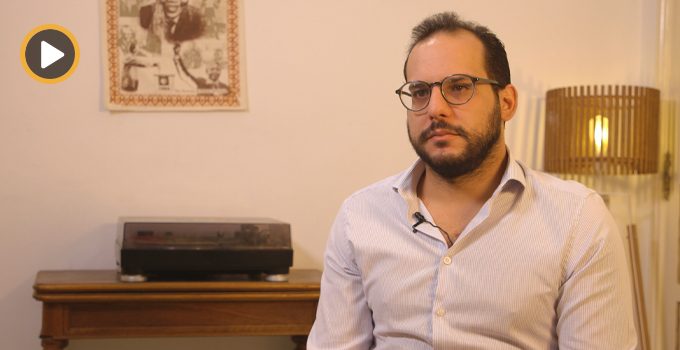Tunisia placed 87 out of 136 countries ranked in the 2017 Travel and Tourism Competitiveness Index, an assessment prepared by the World Economic Forum. According to the Index report released on April 5, Tunisia dropped down 8 points from its position in the previous year, owing to « low safety and security…with terrorism emerging as a destabilizing force…which in turn has led to high costs on business…and an extremely rigid and uncompetitive labour market. »
The same week, at the International Tourism Market in Tunis, the Tunisian Federation of Hotels (Fédération tunisienne de l’hôtellerie, FTH) proposed a debt restructuration plan as a life line for the country’s tourism industry. The sector is weighed down by a staggering debt burden, an estimated 4 billion dinars according to the Federation, and the Central Bank of Tunisia (Banque Centrale de Tunisie, BCT) reports that some 120 out of 800 hotels nationwide are unable to settle their debts. On April 6, the FTH and Tunisian Professional Association of Banks and Financial Establishments (APTBEF) introduced a solution that calls upon not only hotel operators but also banks and the government to take responsibility for the debt crisis.
FTH and APTBEF propose « voluntary » solution for debt repayment
Previous government-backed initiatives to remedy the situation have born no results, FTH president Khaled Fakhfakh told a room full of hotel operators and journalists on April 6. Fakhfakh explained that past attempts to rescuscitate the sector have failed because they were obligatory, did not afford operators the right of first refusal, and because « they were not driven by the FTH. » Samir Saied, general director of the state-owned bank STB (Société tunisienne de banque) and representative of the APTBEF which partnered with the FTH to devise a restructuration plan, emphasized in turn the « voluntary » nature of the proposed solution which would enable willing operators to evaluate the viability of their hotels and to come up with a business plan; In this way, debt repayment would be broken up into two parts: « sustainable debts » to be reimbursed in the short term, and the rest—« unsustainable debts »—to be paid off afterwards, over a longer period and with interest.
Referring to slides projected onto the wall behind them, Fakhfakh and Saied elaborated the « case by case » approach in which banks and financial institutions would be responsible for determining the viability of hotels, taking into account asset value, debt amount, profitability outlook, management profile, and location. If deemed « viable, » the hotel’s capacity to reimburse its debts would be estimated and a repayment plan elaborated. In the case that a hotel is found to be « not viable, » alternative projects will be considered for the unit in question.
Weeding out unprofitable operators, unhealthy competition
Fakhfakh and hotel operators present during the conference urged that decisive action be taken (« we cannot just stand back with our arms folded ») in the case of hotels which remain open in spite of poor management and unprofessionalism. Speaking to Nawaat after the conference, FTH Under Secretary General Mouna Ben Halima described how a few unprofitable hotels hurt the entire sector. She indicates that Law 95-34 concerning the recovery of businesses in economic difficulty is poorly applied, and that lawsuits facing indebted hotel operators are all too often held up in the court for years on end. The result is a prolonged period of inaction during which the hotel in question remains open, an ineffective player in a market under pressure, and unhealthy competition for the more robust operations.
So what would happen to these hotels once determined by the banks to be « non viable »? Ben Halima affirms that there are a number of possibilities, but that their implementation depends on political will. For instance, hotels situated far from the sea and therefore less appealing to tourists could be turned over to the real estate market or converted into shopping centers, schools, or clinics. Such a transformation requires decision-making at the level of local government, since property exploited for a project in tourism cannot simply be turned over to a new use without the municipality’s authorization to « change the vocation » of the land.
« The numbers are stubborn »
Saied also referred to a slide showing a breakdown of the country’s debt obligations by sector. The pie-chart, sourced from a 2015 Bank Supervision Report by the Central Bank of Tunisia (BCT), illustrates that across 8 sectors, « debt obligations are concentrated in the industrial and touristic sectors which take up 27.8% and 20.2% of these obligations respectively. » With a note that « this problem is the same in all touristic countries since the hotel industry is heavily capitalistic, » the FTH and APTBEF justified their proposal to prolong debt payments: « Spain, Morocco, Turkey face the same issues and are financed over 20 to 25 years. »

Not mentioned on April 6 but no less telling than the featured pie-chart is the BCT report’s observation that « in their total engagements, the touristic and agricultural sectors are by far above the average of the banking sector, at 54.2% and 37.6% respectively. » Nawaat has represented the BCT’s findings in the graphics above and below.

Evidently eager to balance out the gravity of the sector’s debt situation, the Federation reported that 84% of Tunisian clients indicate being « satisfied or very satisfied » with hotel services. A journalist who took the microphone afterwards questioned this and other numbers that had been presented in the context of an FTH study concerning « the Tunisian tourist. » Meaning to prove the study’s validity, Fakhfakh clarified that it had in fact been conducted by the polling enterprise SIGMA Conseil, prompting the journalist’s quip, amidst laughter, that the numbers were therefore « all the more » questionable. But Fakhfakh remained serious, reiterating that the findings were straightforward and accurate (« the numbers are stubborn » he repeated), while Ben Halima intervened to point out that it is the remaining 16% of dissatisifed clients in which the FTH is interested.





thanks for this interesting article …. keep up the nice work ….